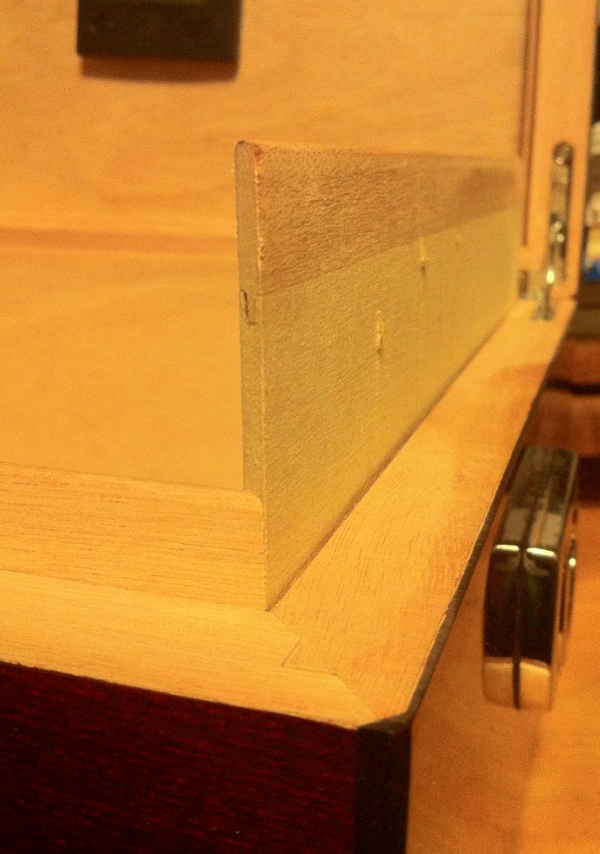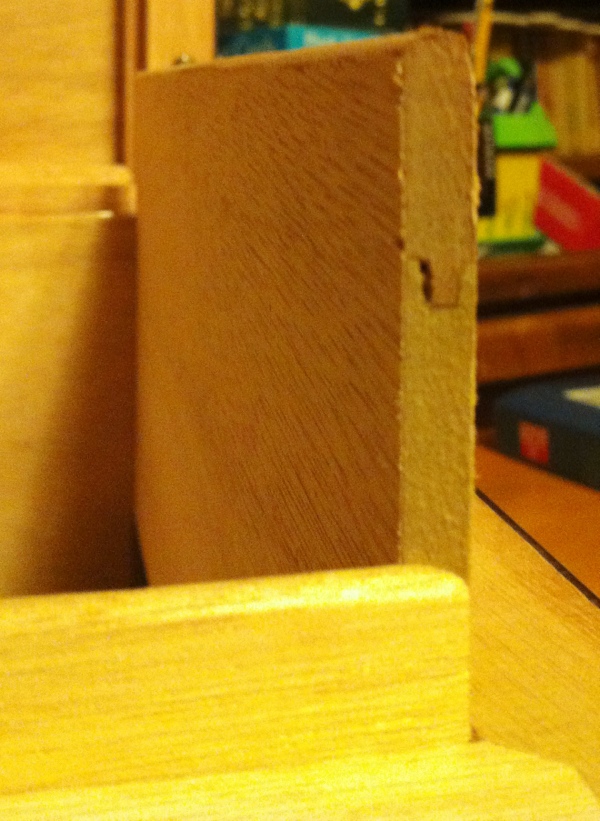nismo270r
Member
- Joined
- Aug 28, 2011
- Messages
- 412
So I got to poking around inside a 160 count Diamond Crown St. James "Oxford" the other day and was a little taken back by what I saw. I knew they were a "box-in-a-box" design, so I assumed underneath that pretty veneer was going to be MDF, albeit very thick MDF under nice veneer. One of the side panels of the cedar liner was a little loose, so I slid it up expecting to see a solid piece of cedar, but found this instead:


The top inch or so was cedar dovetailed into a piece of MDF with cedar veneer on the interior side of the box. :0 This prompted me to remove the other sides of the liner and floor. All were the same, including the floor was MDF with cedar veneer. Now, it's layed out properly to allow for expansion and all, but I would have thought for a box that retails at 500 some bucks it would at least be solid cedar liners!? Anyone else did surgery on one of these, or could this possibly be a counterfeit? I'm glad my Igloo didn't cost $500!


The top inch or so was cedar dovetailed into a piece of MDF with cedar veneer on the interior side of the box. :0 This prompted me to remove the other sides of the liner and floor. All were the same, including the floor was MDF with cedar veneer. Now, it's layed out properly to allow for expansion and all, but I would have thought for a box that retails at 500 some bucks it would at least be solid cedar liners!? Anyone else did surgery on one of these, or could this possibly be a counterfeit? I'm glad my Igloo didn't cost $500!

